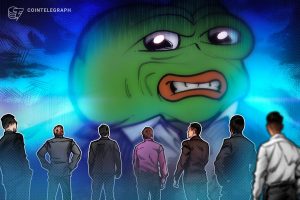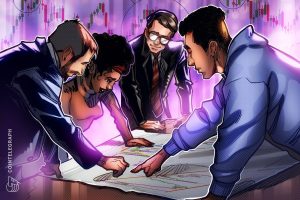How does the economy work?

The economy is a complex system of production, distribution, and consumption of goods and services. Understanding how the economy works can be challenging, but it is essential for making informed decisions about personal finance, investing and public policy.
This article will explore the fundamental concepts of how the economy works, including the factors that influence it and the various components that make up the economy.
Factors that influence the economy
The economy is a dynamic system that is constantly changing and evolving. It is a vast network of people, organizations and governments; each involved in creating, moving, and using commodities and services. The economy is influenced by a wide range of factors, including macroeconomic factors like government policies, interest rates and international trade, as well as microeconomic factors such as individual decisions about spending and saving.
Government policies
Through its policies, the government significantly impacts how the economy develops. Fiscal policy, for instance, describes how the government uses spending and taxation to affect the economy. The government can stimulate the economy or deflate an overheated one using its purchasing power. Taxation is another tool the government can employ to manage the money supply and affect the level of economic activity.
➡️ New: Legislature’s personal income tax & corporate tax proposals would raise between $1.6 – $2.1 billion:
• Senate & Assembly income tax increase: $710M
• Assembly corporate tax increase: $1.2B for MTA & other transit
• Senate corporate tax MTA surcharge: $930M for MTA pic.twitter.com/zj4gYE319K
— Fiscal Policy Institute (@NYFiscalPolicy) March 16, 2023
Interest rates
The cost of borrowing money is represented by interest rates, which impact both consumer spending and company investment. Borrowing money is less expensive when interest rates are low, which can promote economic growth. High interest rates make borrowing more costly, which can stifle economic growth.
International trade
International trade also plays a crucial role in the economy. Trade between countries allows for the exchange of goods and services, which can increase economic growth and efficiency. However, trade can also lead to job losses in certain industries and countries, and imbalances in the trade deficit.
Components of the economy
The economy comprises three primary components: households, businesses and government. Each of these components plays a vital role in the economy and interacts with the others in complex ways.
Households
Households are the consumers of goods and services. People use the money they earn from employment or investments to pay for goods and services from companies. Due to the fact that household spending makes up a sizable share of the demand for goods and services, it has a considerable impact on economic growth.
Businesses
Businesses are the producers of goods and services. To create items and services sold to consumers or other businesses, they employ staff and invest in inputs like raw materials, equipment and technology. Business investment is critical to economic growth since it boosts productivity and creates jobs.
Government
The government plays a crucial economic role through its policies and spending. The government provides essential public goods and services such as education, healthcare and infrastructure, and it also regulates the economy to ensure fair competition and protect consumers.
Economic indicators
Several economic indicators are used to measure the health of the economy. These indicators provide insight into the level of economic activity, and can help individuals and policymakers make informed decisions.
Gross domestic product (GDP)
GDP is the total value of goods and services produced in a country over a specified period — usually a year. GDP is one of the most widely used economic indicators and provides a broad measure of economic activity.
Public sector debt excluding public sector banks was £2,507.3 billion at the end of February 2023, or around 99.2% of gross domestic product.
A debt-to-GDP ratio last seen in the early 1960s.
➡️ https://t.co/eEaU2HoHvy pic.twitter.com/rHvCU9heBg
— Office for National Statistics (ONS) (@ONS) March 21, 2023
Unemployment rate
The unemployment rate is the proportion of the labor force that is unemployed but actively looking for work. It is an important indicator of the labor market’s health and sheds light on the level of economic activity. High unemployment rates indicate a low labor market and a low level of economic activity. In contrast, low unemployment rates indicate a strong labor market and a high level of economic activity.
Inflation rate
The inflation rate gauges how quickly the average cost of goods and services is rising across an economy. Several causes, like a growth in the amount of money in circulation or a rise in the demand for goods and services, can contribute to inflation. Low inflation rates might signal sluggish economic growth, whereas high inflation rates can signal an overheated economy.
Related: How to preserve capital during inflation using cryptocurrencies?
Consumer Price Index (CPI)
The CPI measures the average price of a basket of household goods and services. It is used to track inflation over time and to adjust for changes in the cost of living. The CPI is an important indicator of consumer spending patterns, providing insight into the economy’s health.
#BEFOREandAFTER
Inflation “Good News, Bad News”
The GOOD NEWS is increases to the Producer Price Index &the Consumer Price Index are slowing!
The BAD NEWS is the CPI is 4 times what it was on Inauguration Day &the PPI is triple!
I.e. Inflation has to fall over 75% for us to… pic.twitter.com/c7Req5JO4J
— Man In the Middle (@NE1Honest) March 24, 2023
Retail sales
Retail sales are a measure of the total amount of goods sold by retailers over a specified period. Retail sales can be a good indicator of consumer spending patterns. High retail sales indicate a strong economy, while low retail sales suggest weak economic activity.
Industrial production
Industrial production measures the total output of the industrial sector of the economy, including manufacturing, mining and utilities. It is an important indicator of the health of the manufacturing industry — a critical component of many economies.
Housing starts
The number of new residential construction projects that have started over a specific period is called housing starts. They are a crucial gauge of the housing market’s health and the state of the overall economy. Low numbers of home starts can signify sluggish economic activity, while high levels can suggest significant economic growth.
How does blockchain affect economic growth?
Blockchain technology has the potential to significantly impact economic growth in several ways. By enabling secure and efficient transactions, reducing costs, and increasing transparency and trust, blockchain can promote innovation, productivity and financial inclusion.
Related: How blockchain empowers women in developing economies
In addition, blockchain-based apps can produce fresh company models and sources of income, stimulating the economy and opening up job prospects. Because blockchain technology is still in its early stages of development and adoption, the total influence of this technology on economic growth has not yet been realized.
Yet, the ability of blockchain to revolutionize many businesses and sectors — from logistics and supply chains to finance and healthcare — makes it a viable tool for promoting economic growth in years to come.















